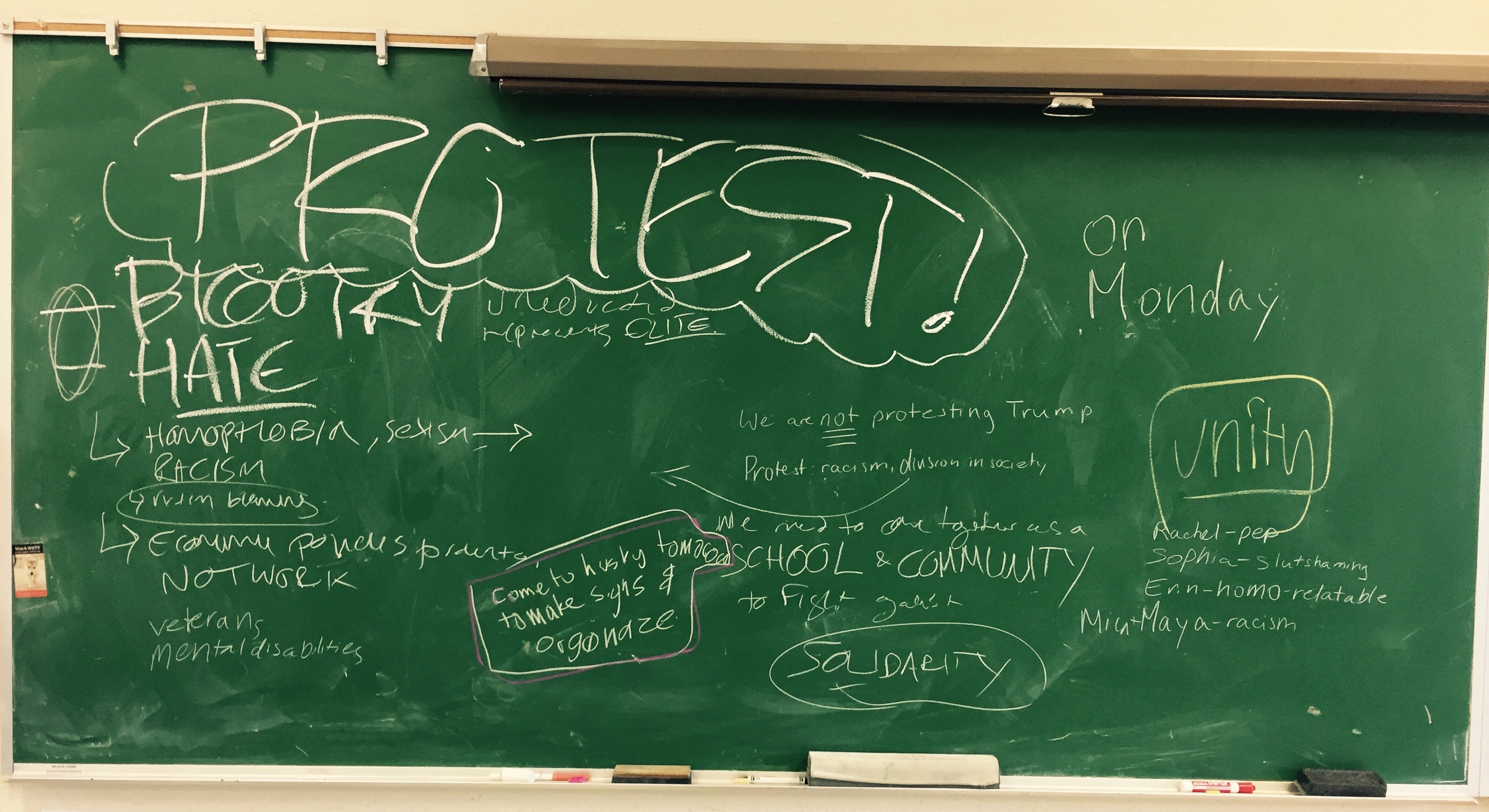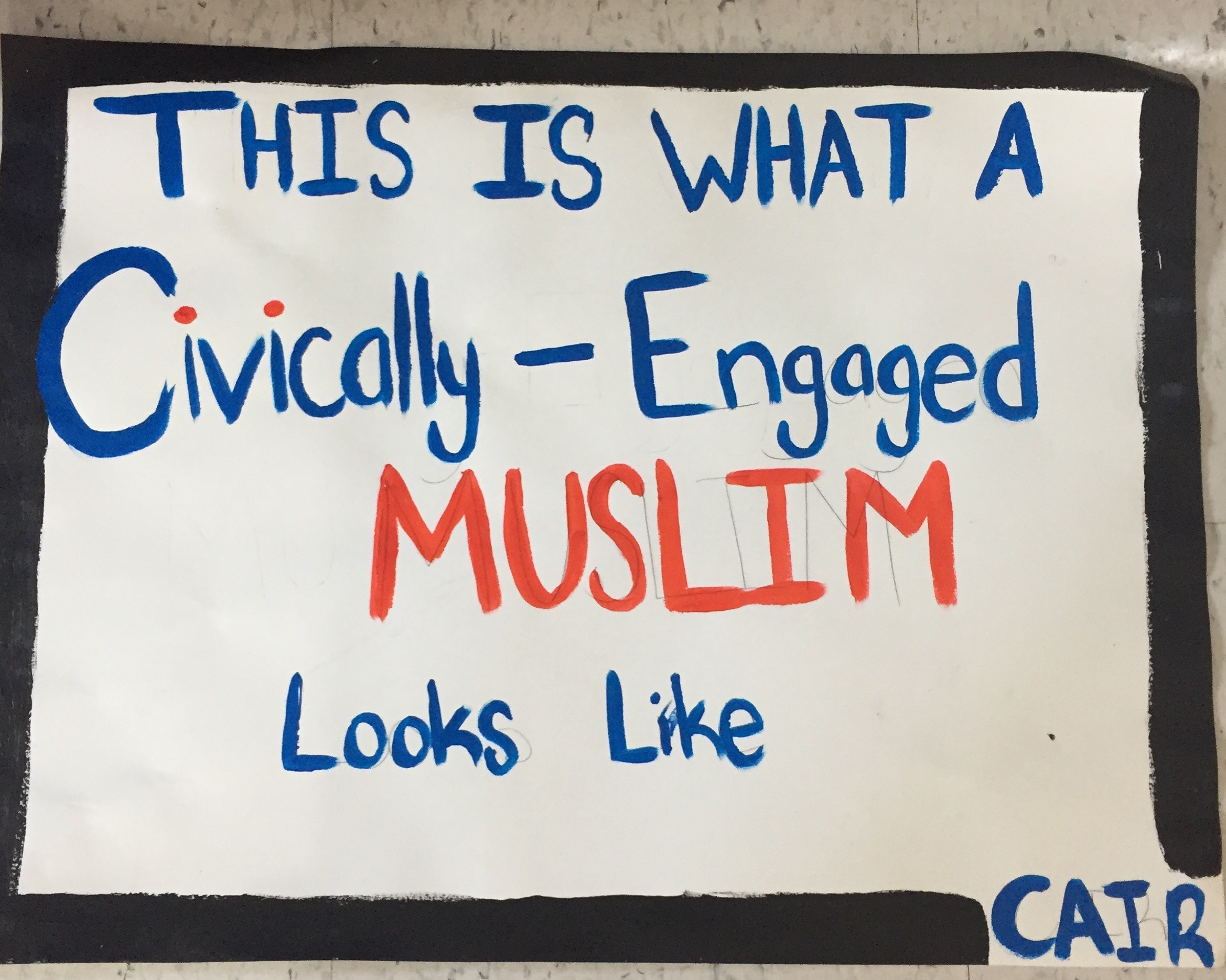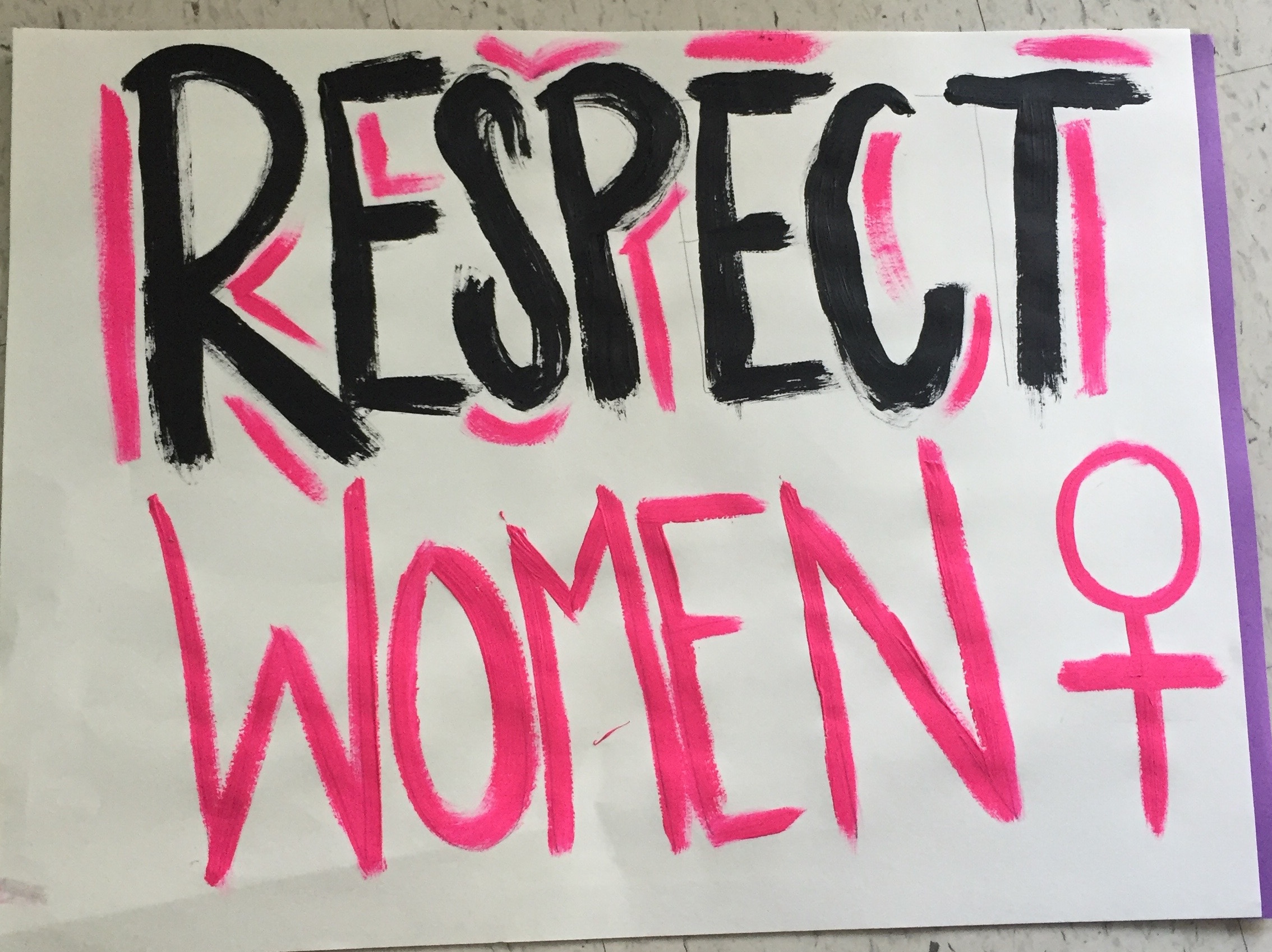 “Contemporary artists don’t have art teachers bossing them around all the time.” This is something I say to my high school students periodically, as a way of framing the self-driven nature of a thriving contemporary artistic practice. This idea of the contemporary artist as an empowered free agent, taking part in global conversations about important topics and issues in and through their work is one that I knew would come in handy in the days immediately following the 2016 presidential election when so many of my students’ emotions were running high. I knew in those intense first few days after the election, that in addition to the youth activists in the Bay Area who were leading the way with protests and walkouts, I could count on several Art21 artists to model for my students some powerful possibilities for engaging with the kinds of ideas and issues raised by the 2016 presidential campaign and election.
“Contemporary artists don’t have art teachers bossing them around all the time.” This is something I say to my high school students periodically, as a way of framing the self-driven nature of a thriving contemporary artistic practice. This idea of the contemporary artist as an empowered free agent, taking part in global conversations about important topics and issues in and through their work is one that I knew would come in handy in the days immediately following the 2016 presidential election when so many of my students’ emotions were running high. I knew in those intense first few days after the election, that in addition to the youth activists in the Bay Area who were leading the way with protests and walkouts, I could count on several Art21 artists to model for my students some powerful possibilities for engaging with the kinds of ideas and issues raised by the 2016 presidential campaign and election.
The scene in my classroom: A large light-filled art room at Washington High School in Fremont, California. It is the morning of November 9th 2016, fourth period, Art 1. This particular Art 1 class consists entirely of tenth graders who are enrolled in WHS’s Multimedia Art Academy, a small learning community that is in essence a visual art-focused school housed within the larger WHS population. The demographics of the students in this particular Art 1 class mirror the overall high school’s, which in turn mirrors the ever-shifting demographics of Fremont and the state of California. Which is to say that the fourth period Art Academy students are a very diverse group. The majority of them are first- and second-generation emigres from Afghanistan, Pakistan, India, Korea, Iran, China, Mexico, South America, and The Philippines. It is the day after the 2016 United States presidential election and the energy in the room is palpably tense.
Somehow, I knew that the sophomores in fourth period would be up for a class discussion about the election results and their implications. This group had been on fire since the first day of school in August, when they boldly threw themselves into their first TASK party. In the weeks since, the Art Academy sophomores had shown themselves to be an incredibly engaged group, displaying an impressive culture of experimentation in their art-making and an eager readiness to hash things out verbally in class discussions.
Today, many of the tenth graders were visibly angry, agitated, and in some cases clearly frightened. The student population at Washington High features a large number of young people who see themselves as among the most vulnerable potential targets of the incoming Trump administration. I know this because over the course of the past year, many students have openly spoken to me about this feeling of vulnerability. Today though, in spite of their emotions, the fourth period sophomores were intensely focused. Inspired by the realtime accounts of student walkouts and protests they were hearing about on Snapchat, Facebook, Twitter, and Tumblr, the students planned a ‘Teach-In’ and ‘Walk-out’ for the following Monday. They organized a signup sheet for speakers on various topics including Islamophobia, Misogyny, Homophobia, and Immigrant Rights. Thanks to their focused pre-planning, the students’ ‘Teach-In/Walk Out’ went well. More than one-hundred students showed up for the action, students addressed each other using a megaphone, f-bombs were dropped, the First Amendment was exercised, and energy was positively channeled.
The following day in fourth period, the mood initially felt heavy. The exhilaration the sophomores had felt in planning, then pulling off a successful public protest was visibly fading as they settled back into business as usual at school. I decided an Art in the Twenty-First Century/New York Close Up intervention was called for. Throughout the day I showed videos by Mary Mattingly, LaToya Ruby Frazier, and Allora & Calzadilla. The fourth period sophomores were riveted by the films and the heavy feeling in the room suddenly dissipated as they saw how contemporary artists wove socially engaged ideas into their work. In the follow-up discussions after each of the videos, facilitated by a WHS Art Academy senior, it was abundantly clear that the sophomores were strongly connecting with the methods and purposes of the Art21 artists.
They commented on Mary Mattingly’s use of metaphor and were impressed by her documentation of all her possessions, and the research she did on what her belongings are made of and where they were manufactured. One student excitedly started discussing how “producing things has effects people don’t see.” Other students got excited about LaToya Ruby Frazier’s work—in particular how she took on the Levi’s corporation over their misrepresentation and exploitation of her hometown of Braddock, Pennsylvania. They asked if what Frazier was doing in front of the Levi’s store was performance art, then asked if they could do that too. In general, I believe the power of these Art21 films, coming as they did on the heels of the students’ first experience with civil disobedience, was to act as a bridge between that protest and future actions they might take as artists. I saw the lightbulbs go on above their heads and the sense of school-induced passivity seemed to lift. I can’t wait to see what they come up with.
Stay Tuned.





